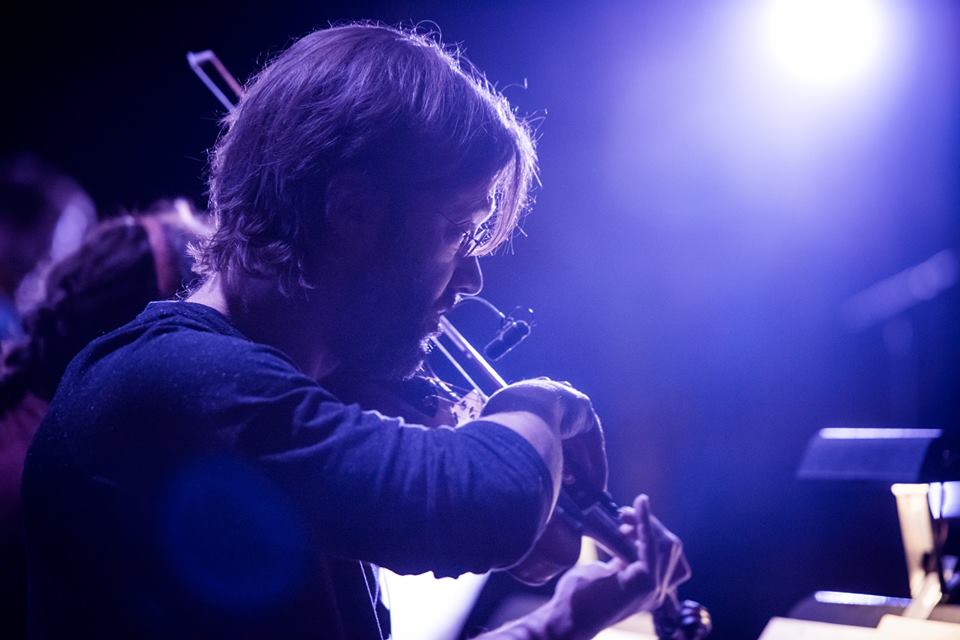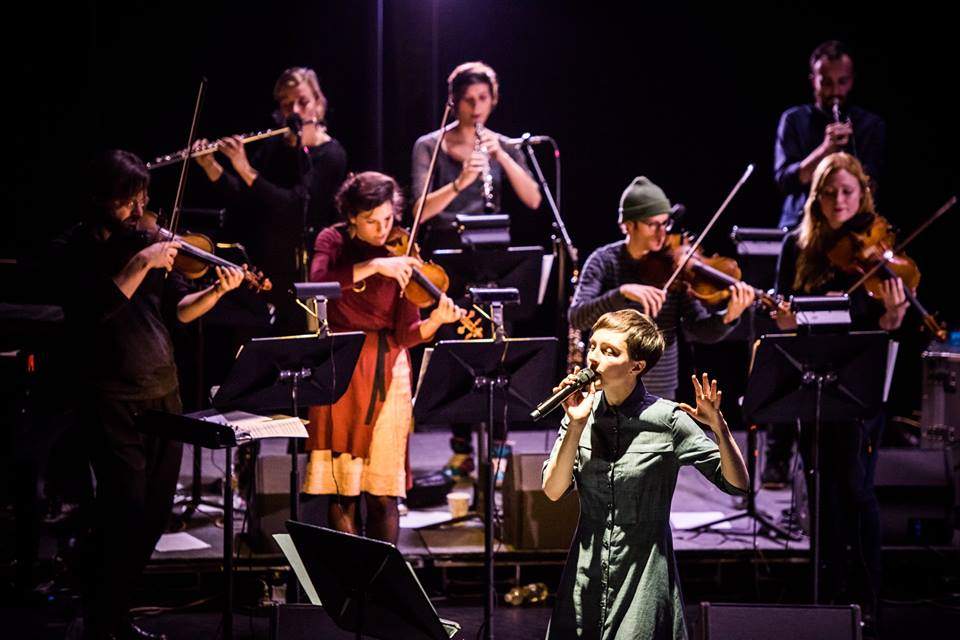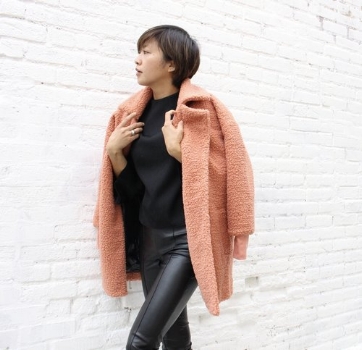JL: Yeah I feel like it’s present throughout the cycle but especially in “The Past.” I’m really struck by that co-existence and juxtaposition of playful, joyous, childlike wonder and this painful childlike trauma. Especially in the intro of that piece, as it’s moving towards darkness and then it suddenly gets interrupted by the guitar and harp. So it feels likes it’s gonna go somewhere intense and then it jump cuts back to playing on the playground where it’s all light and fun and bubbly. Then it’s able to get really heavy and intense as it returns to “the way I did that place”. That’s something that to me, every time I hear it, is extraordinarily satisfying compositionally. And it’s emotionally somewhat jarring; it takes me through such a wide array of emotions just in one movement.
SKS: Wow, that’s really gratifying to hear, thank you. I think that for me in many ways “The Past” is my favorite movement because it sort of encapsulates what the whole song cycle is about. I think it’s something that a lot of people can relate to because we’ve all had times in our lives that were difficult or unhappy but that we wouldn’t trade because the wisdom and strength we gained through endurance made us who we are in the present. Those early heartbreaks and disappointments and even traumas were so much more painful for being the firsts, but there is also beauty in having the capacity to feel things deeply, and one can definitely feel a nostalgic longing for that--for the days of having a softer heart.
JL: With that it's very appropriate that I just happen to be looking at “No so low, the flying slicing wing, it says that there is beauty inside your suffering.”
SKS: It’s funny because that line was actually a source of questioning for Shara and Padma. Most of the cycle text is story, metaphor, and allusion — stories that convey messages indirectly, obliquely. “It says that there is beauty inside your suffering” is a line that was direct and straight, and they weren’t sure how to approach it vocally. Which I totally understood, but I also loved the presence of that line because the cycle has so much elliptical representation; once in awhile it’s nice to have a kind of thesis statement saying, simply and directly: “here’s what this is all about.”
JL: Yeah. And to me, one of the things I love about it is that there’s still something very complicated about it — it can be very confusing to acknowledge that, yes, there is beauty inside suffering, because how much do we as people want to choose to suffer? And I know at least for me there was a period of time where I got a little invested in exploring that. I wanted to sit in it, find all of it beautiful and suffer a little bit. But now I’m in a place where I feel like, cool I did that for a bit and now I’m going to try to see those past moments of suffering as beautiful but make a different choice. And that relates a lot to nostalgia; what it is to sit inside of both nostalgia and suffering and to look to the past, and the choice of that. Whether it’s to repeat cycles of the past or to see it as a framework that involved a lot of suffering but was also a kind of emotional height, where you’ll never learn to love someone that way, where it was a pinnacle of your existence. So I think that line is both direct and endlessly complicated.
JL: On a different note, I’m curious about the relationship of being young and coming to terms with life and death.
SKS: Yes, this is of course a huge part of what the cycle is about: the child learning about a death, trying to make sense of it, trying to incorporate it into their worldview. That is the ultimate loss of innocence, and it usually happens pretty early for kids — a character in a book or movie dies, they see a dead animal on the road, or more traumatically, they lose someone close to them. One of the greatest challenges I’ve had as a parent is talking about death with my kids and trying to explain it to them what it means, when I myself don’t really know. I try to present them with all of the different ways of thinking, different religions, philosophers’ takes on it. But ultimately there is no right answer. It’s a constant challenge to live with that awareness and yet still take risks and live fully and deeply and consciously.






















































